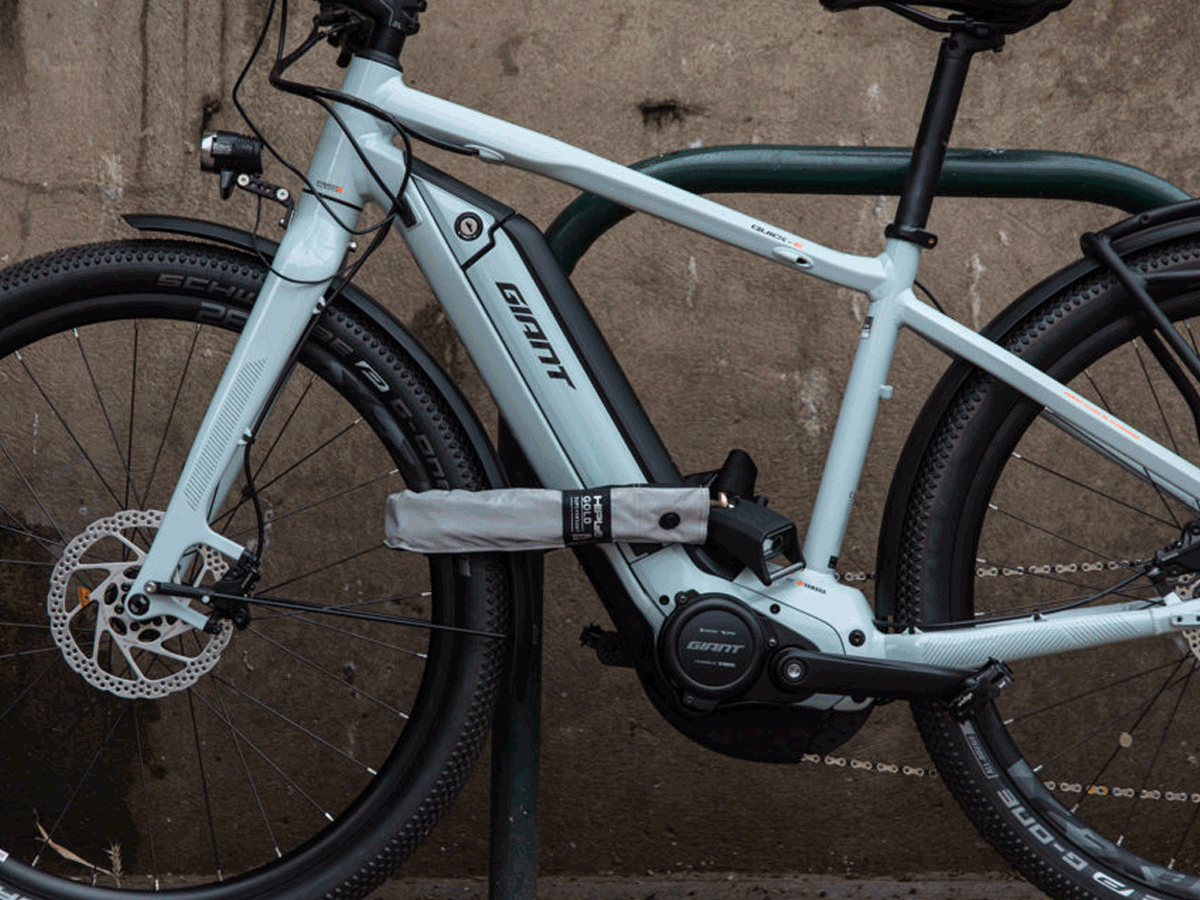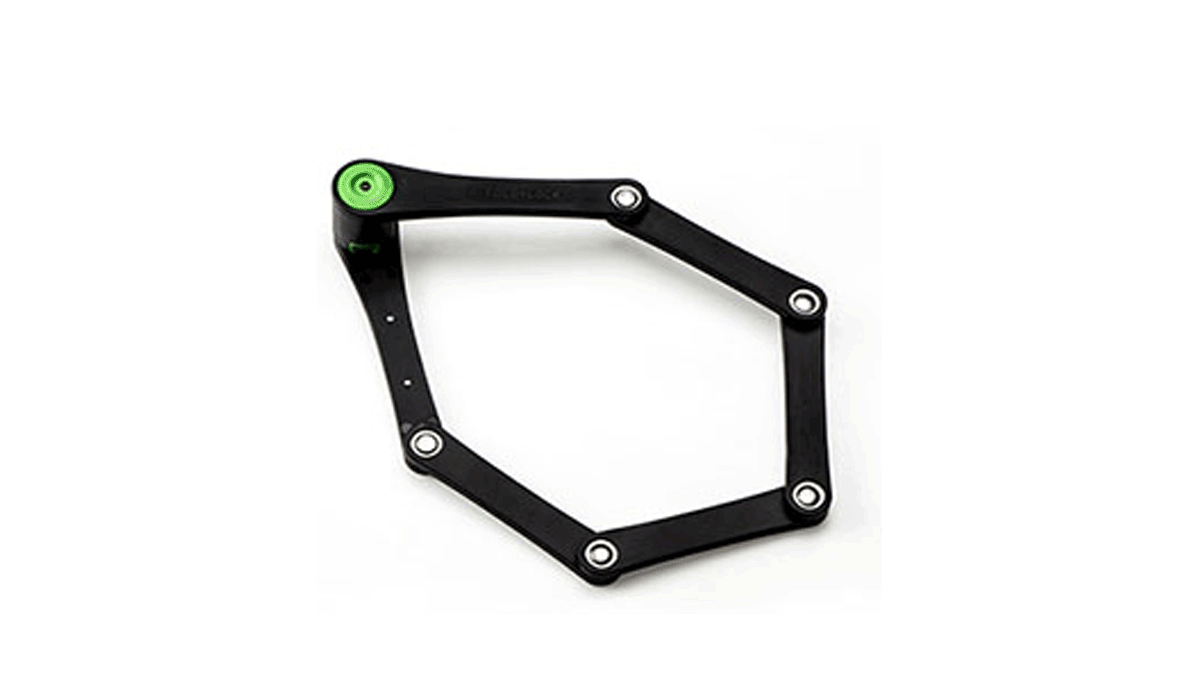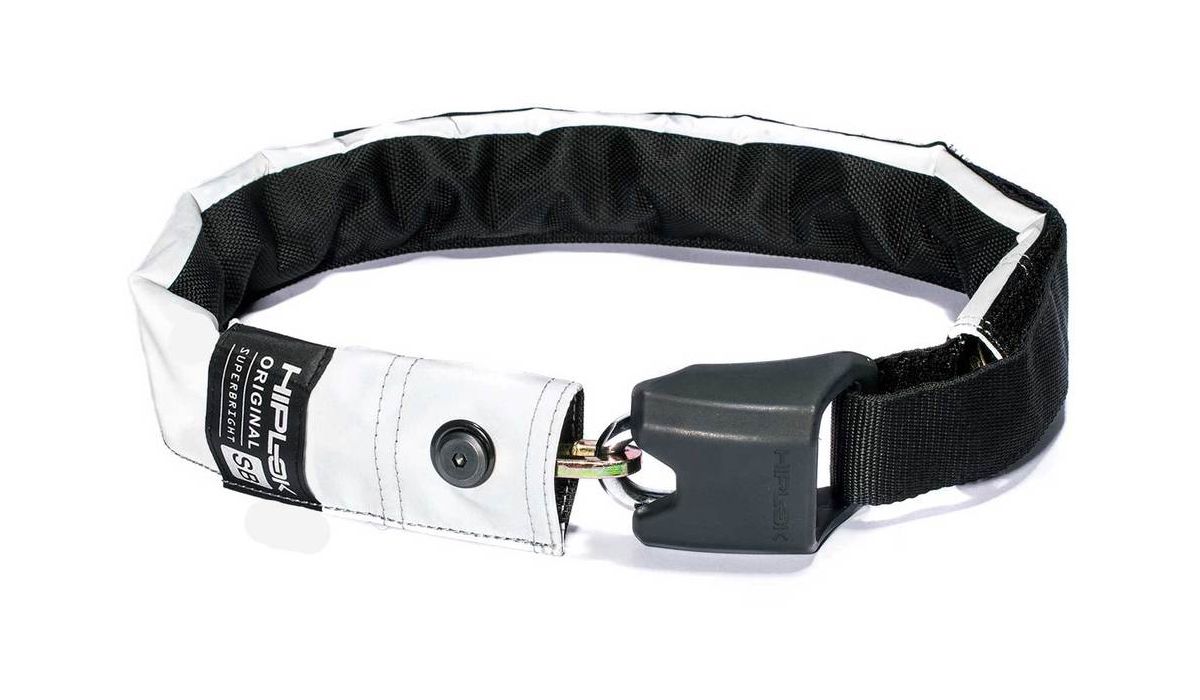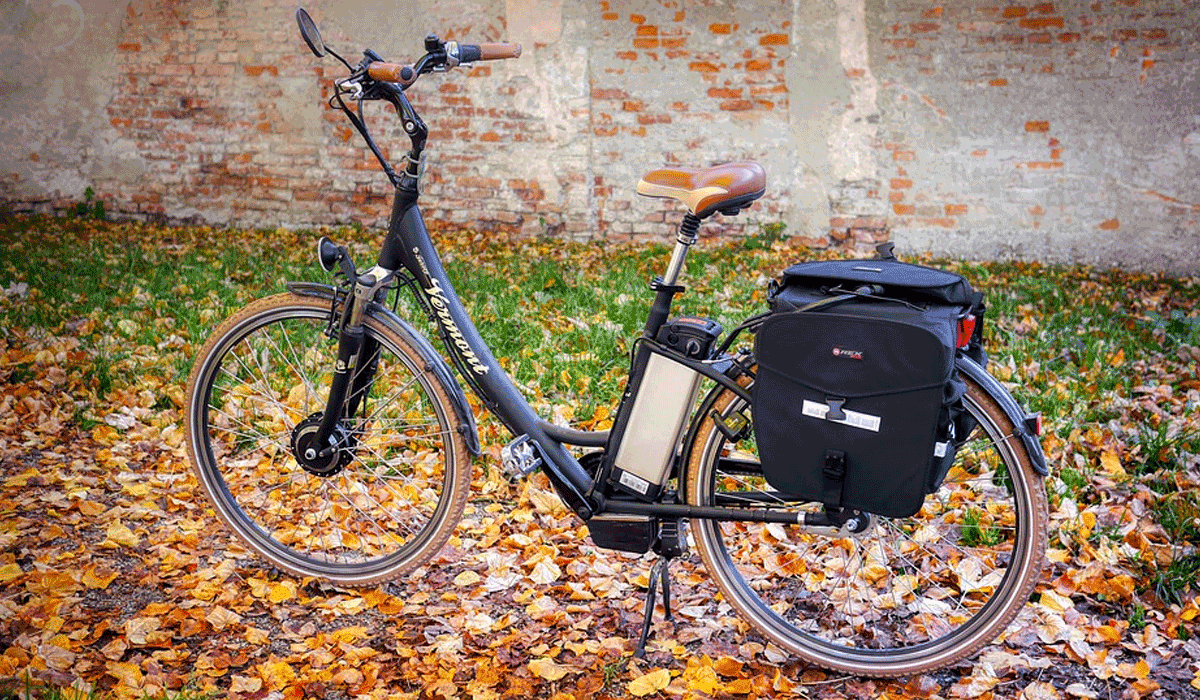
Last updated: November 2022
Ever wondered what the best way is to lock your e-bike? We asked lock expert, Carl, at the thebestbikelock.com, to tell us all you need to know....
As electric bikes become more popular, they’re increasingly being targeted by thieves. So if you own an e-bike, how can you protect it?
Well, a lot of the advice on how to secure a regular bike also applies to e-bikes. However, there are a few peculiarities that mean our approach to e-bikes should be a little different. Let’s take a look at them here...
Looking to protect your e-bike for ultimate peace of mind? Find out more about our comprehensive e-bike insurance.
You may also be interested in:
Which lock security rating?
First of all, e-bikes are expensive, so don’t mess about with anything less than a Sold Secure Gold rated bike lock.
Pedalsure may cover you with a Silver rated lock (for bikes up to £1,000), but there are so many different types of Gold rated locks available, at so many different price points, that I wouldn’t recommend taking the risk with something less secure.
Also, bear in mind that Sold Secure have just introduced a new Diamond rating, which sits above the Gold rating and is specifically targeted “at very high value bicycles and e-bikes”.
So if your e-bike is particularly expensive and your circumstances are especially high risk, you should probably take a look at those too!
Ultimately, many of the more secure Gold rated locks will receive a Diamond rating once they’ve been re-tested. But that process will take a while. This means that for the moment the Diamond range is quite limited.
It also means that we can’t presume that all the Diamond rated locks are more secure than all the Gold rated locks. They’re not...
The Kryptonite New York Fahgettaboudit for example, is the most secure portable bike lock currently available and will certainly be rated Diamond once it’s re-tested. But it hasn’t been tested yet, so it remains a Gold lock, despite being more secure than most Diamond locks!
What type of lock?
But which type of lock is best for securing an e-bike? For regular bikes, smaller u-locks are usually the best choice, as they tend to offer the nicest balance between security, weight and usability.
However, with e-bikes there a few things that may make the smaller u-locks less suitable. Most importantly, e-bikes tend to be bigger. The wheels are often wider and further from the frame. And the down tube is usually fatter, to accommodate the battery pack.
This means that you’ll tend to need a lock with a bigger locking circumference to get it around your bike and whatever you’re securing it to. Especially if you want to use one lock to secure your frame and a wheel.
And protecting the rear wheel is especially important on an e-bike, as it usually contains the motor, so it will be very expensive to replace!
Having said all that, e-bikes come in an ever increasing range of shapes and size. These days some of them are almost as svelte as the slimmest steel framed road bikes. While others have comically overblown wheels and frames reminiscent of motorbikes.
What’s more, you don’t have to use one lock to secure your frame and rear wheel. There are alternative ways to adequately protect your bike.
What I’m saying is: whatever type of e-bike you’ve got, you actually have a lot of options. You just need to know what the different options are for your particular bike. So, let’s take a look at what’s available...
If you’ve got a typical e-bike (that’s a little bit bigger and heavier than a regular bike), a u-lock may not be wide (or long) enough to go around your frame, your back wheel and whatever you’re locking your bike to. In which case a folding lock or a chain is probably a better option.
Folding Locks

The best Gold rated folding lock is the Abus Bordo 6500 in my opinion. And while its locking circumference is about the same as a standard size u-lock, because it’s flexible, in most circumstances, you should be able to get it around the frame, the back wheel and an immovable object.
The 6500 has the benefit of folding down into a nicely compact package that’s really easy to carry on your bike, especially if you have the holes for a water cradle in your frame (as the carrying case will screw into these).
It’s not at the higher end of the Sold Secure Gold rating. But if it works well with your bike and how you want to secure it, it’s a good choice.
Chain Locks

Alternatively, you could go for a decent chain lock. I wouldn’t recommend anything with links that are less than 10 mm, as they’re easier to cut with bolt croppers.
The problem with secure chains is that they’re always much heavier than other locks. But there’s a wide range of different lengths to choose from so you should be able to find one that meets your particular needs, no matter how wide your wheels or how fat your frame!
Noose chains allow you to get the most out of any length of chain and work particularly well with e-bikes. Both Kryptonite and Hiplok make decent Gold rated noose chains that are worth checking out.
But how will you carry it? Shorter chains can be wrapped around your seat post. But longer ones pose more of a challenge. They could be carried in a pannier, or a backpack (although don’t forget they’re pretty heavy).
Alternatively, you can wear them like a bandolier across your chest. And Hiplok chains can even be worn around your waist like a belt!
Alternative Locking Techniques
But if the choices so far, seem a bit restrictive, don’t worry! They’re only determined by that need to secure the frame and back wheel with one lock. And we don’t really have to do that…
Even if we did, what about the front tire? That needs securing too. And then there’s the bike seat as well. You can use more locks, but that’s going to mean more weight and more time spent locking up.
The truth is: there are alternative ways to protect your wheels and seat (and everything else). And if you go with them, your primary lock only has to protect your frame, which means it can be much smaller (and lighter, and easier to carry).
Hexlox, Pinhead, Pitlock, Abus, Kryptonite and several other companies sell systems that allow you to replace the quick release and standard hex screw skewers (which attach your components to your bike), with something much more secure.
Different systems use different techniques to achieve this. Abus and Kryptonite sell replacement skewers that can only be unscrewed when your bike is upside down, (working on the premise that a locked bike can’t be upended). Pinhead and Pitlock sell skewers that can only be unscrewed with one of their unique keys.
And Hexlox sell tiny magnetic nuts that attach to the inside of hex sockets to prevent them from being loosened with an Allen key. The advantage of Hexlox is that you can use them to protect anything that’s already attached to your frame with a hex screw. But don’t fret, if your bike doesn’t use hex screws and skewers, they can also provide those too.
Whichever brand you choose, these “security skewers” have several advantages over using an extra lock. They’re much lighter. You don’t have to worry about how you’re going to carry them around. And you don’t have to spend time locking and unlocking them every time you use your bike.
Plus, as I’ve already mentioned, they free you from the need to use a large, heavy and unwieldy primary lock to secure your frame. Your lock just needs to be big enough to go around your frame and whatever you’re locking it to.
Which means you could use a relatively small u-lock, which can actually be more secure than any folding lock or 10 mm chain!
Securing your Accessories
I’m mostly thinking about your battery here. If you can remove your battery easily, so can a thief. Most removable batteries come with an integrated lock. But most of those locks are next to useless if they’re actually tested.
Some of them can be opened with blank keys. Some of them can be bypassed using screw drivers (or other basic tools). Some of them can simply be popped open.
So, if you’re leaving your bike for more than a few minutes, it’s a good idea to take your battery with you. Alternatively, if the battery has a handle, you might be able to thread a lock through it for extra security.
But to be honest, it’s unclear just how prevalent e-bike battery theft is at the moment. I have read that it’s the most stolen component from e-bikes, but I’m yet to hear a first hand account of an actual theft!
The best thing to do is ask in your local e-bike shop or user groups. They will know what’s going on locally and you can act accordingly.
Other than your battery, you should obviously take steps to secure the other accessories on your e-bike including any screen (which should be removed and taken with you).
Wrapping Up

All of the steps that you should take to protect a regular bike can also be applied to an e-bike. But there are particular characteristics of e-bikes that call for some refinement to our approach.
The first is cost. E-bikes are expensive and therefore desirable, so you should always protect the frame with a Sold Secure Gold lock.
And it’s not just the bike as a whole that’s expensive. The motor, the battery and the other components will be very costly to replace if they’re stolen, so we need to protect them properly too.
This can be complicated by the extra bulk that these components often add to e-bikes, as it means you’ll need big, heavy locks to secure them using traditional methods.
Now, there’s no doubt that the most secure way to protect your bike is with two (or more) u-lock and/or chains that go around both your frame and your wheels. And this will remain the best solution for some people.
But don’t think that because you’ve got a big, bulky e-bike that you’re limited to big, bulky locks.
If you’re prepared to be creative with your technique, by using security skewers, there’s actually no reason you should be carrying around more weight than a regular cyclist.
As ever, it’s all about finding the solution that works for you. And that should be one that adequately protects your bike but doesn't make it difficult to use it on a daily basis!
